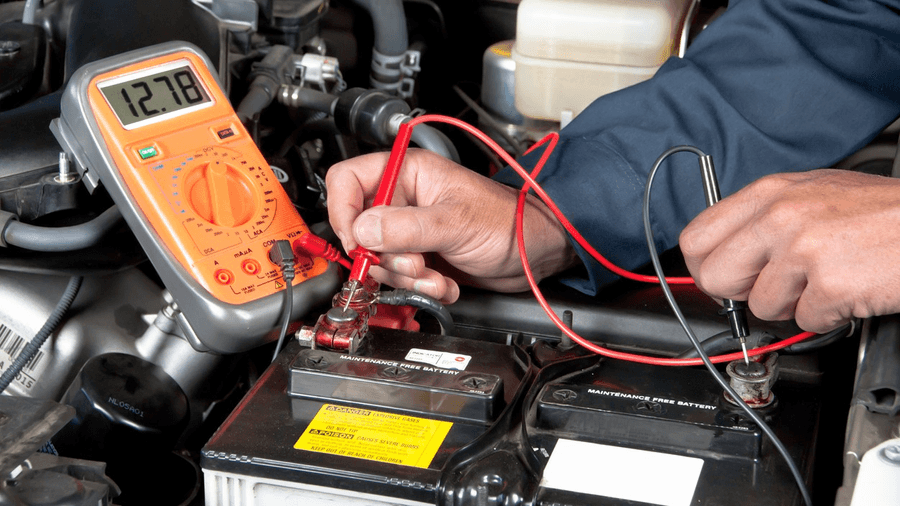What’s the difference between manufacturer parts and aftermarket parts? What do those words even mean? Today on the blog we’re unpacking the difference and giving you the information you need to make an informed decision about your next repair or maintenance service.
Manufacturer Parts
Original equipment manufacturer parts, or “OEM parts” are pretty self explanatory- they are parts that are made and approved by your vehicle’s manufacturer, specifically for your vehicle. The parts they make will match your car exactly.
Benefits of Manufacturer Parts
- Quality guarantee. In general, auto manufacturers have very high standards that they are held to by regulators, such as the National Highway Traffic Safety Administration (NHTSA).
- Peace of mind. Because the parts are made by the same people who made your vehicle, they will be a 100% match for what your unique year, make, and model needs.
- Warranty. OEM parts can have an extended warranty to match the remaining vehicles warranty.
Downside of Manufacturer Parts
- Price. Manufacturer parts are typically more expensive than aftermarket parts in part because of the multiple tests they must pass to meet the higher standards of quality you would expect from an OEM – this is a big reason why many people choose aftermarket parts.
- Availability. Manufacturer made parts are typically only able to be purchased from a certified distributor of that manufacturer, i.e. a dealership. So, if you want an oil filter that matches exactly what your car’s manual says to get, you won’t be able to find it at the local AutoZone or Advanced Auto Parts.
Aftermarket Parts
Mass producers of parts are held to different standards than auto manufacturers and not regulated in the same way as new automotive manufacturers are (they are still regulated of course, but just not to the same standards!) Aftermarket parts have more of a “one size fits all” approach to manufacturing parts, and that can be reflected in the quality.
Benefits of Aftermarket Parts
- Price. Usually, aftermarket parts are less expensive than manufacturer made parts. The reason for this is simple, as explained by our in house expert and Service Director Wanda Cockrell “An aftermarket manufacturer can look at a cabin air filter for example and decide to make it 10.25 inches which will be an okay fit for most vehicles – a little snug on some, a little loose on others, but it will fit in the space and do the job it’s supposed to do. Then, they’re able to mass produce that part which saves them, and therefore you, money.”
- Availability. You can find aftermarket parts all over the place – online, in stores like AutoZone, etc. There is a wide variety of parts to choose from – some people even choose parts that are meant to perform better than OEM parts.
Downsides of Aftermarket Parts
- Quality. As with any purchase, it’s important to be an informed shopper. For some parts, aftermarket might be the best choice because the quality difference from an OEM part is very slim and the price gap is wide. But, it’s important to make sure the quality of the part you’re purchasing is high – look for brands like Rain-X for washer fluid, Hawk for brake pads, and Mobil1 for oil (Read our blog here about how to choose the best oil for your car!) – but it’s important to know that there is no one best brand for aftermarket parts.
- Warranty issues. When your vehicle is in the warranty period, it wouldn’t be advisable to buy aftermarket parts for your car as if that part were to fail, it could void your warranty or at a minimum, cause whatever issue is occurring to not be covered by your warranty.
The Bottom Line
When it comes to selecting OEM vs aftermarket parts, it is a personal decision. That being said, our experts say it’s always a safe bet to use OEM parts unless you are willing to do the proper research to ensure you’re getting a high quality product from someone you trust.
Davis Eastman, our Parts Director in our Bethesda service center, describes it this way:
“When you buy brake pads for your Chevrolet Pickup, for example, OEM pads are formulated for the weight of the vehicle and load capacity. They were also made using the newest formula available of brake pad material for stopping power and longevity. A Corvette uses a brake pad formula that is different from that of a truck, with different benchmarks for performance. With aftermarket brake pads no matter what car the pads go on the formula is the same.”
Typically our experts begin to recommend aftermarket parts as a vehicle ages, and that threshold is modified by the vehicle’s value. We might recommend OEM parts on a 10 year old Mercedes, for example, but not for a 10 year old Toyota.
At the end of the day, an informed car owner is a happy car owner. Do your research to figure out what’s best for your vehicle and situation and remember, we’re here to help not only care for your car, but be a trusted advisor to you when it comes to making choices about your car.
Get Started with
Monday to Friday - 7:30 AM to 6 PM | Saturday - 8 AM to 4 PM
This site is protected by reCAPTCHA and the Google Privacy Policy and Terms of Service apply.


